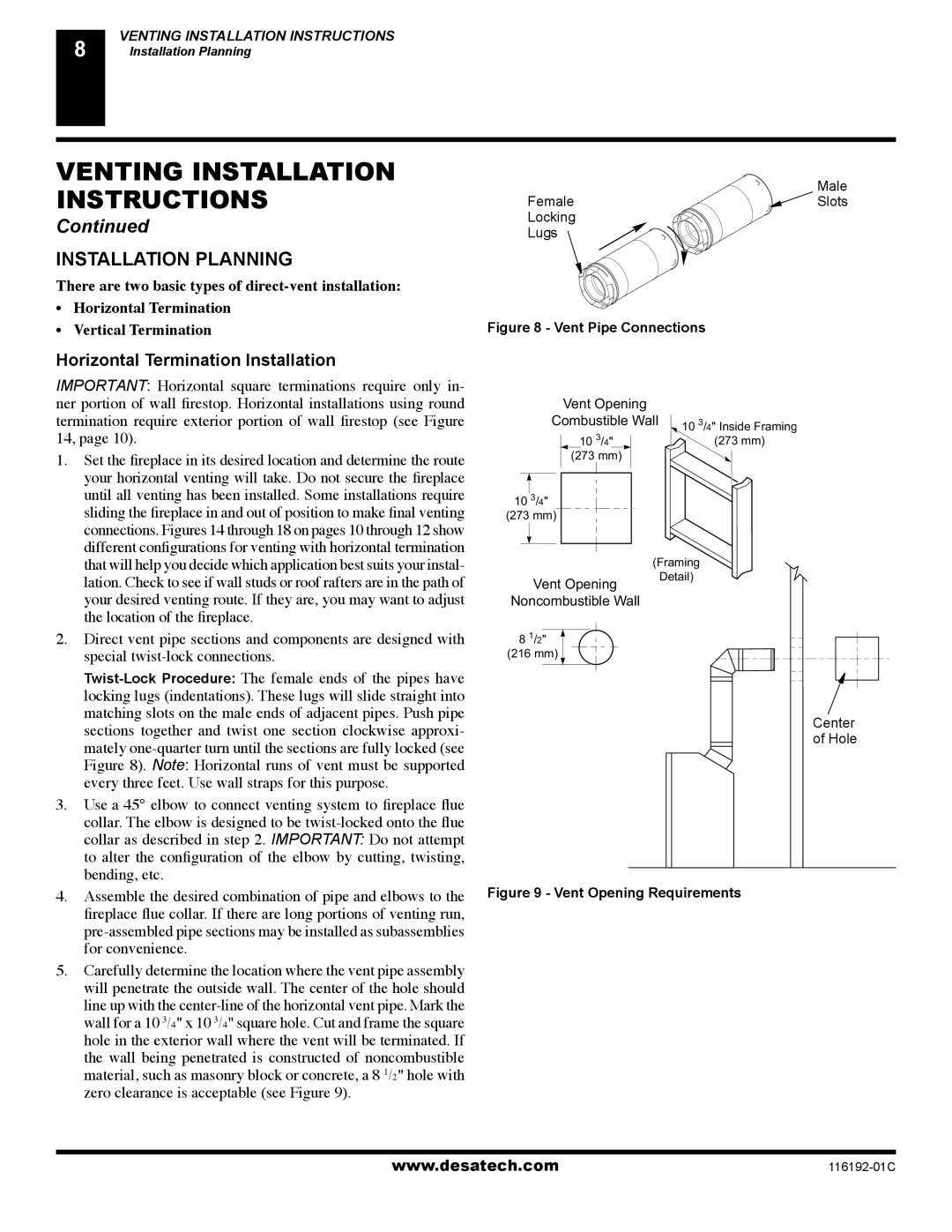
8
VENTING INSTALLATION INSTRUCTIONS
Installation Planning
VENTING INSTALLATION INSTRUCTIONS
Continued
INSTALLATION PLANNING
There are two basic types of
•Horizontal Termination
•Vertical Termination
Horizontal Termination Installation
IMPORTANT: Horizontal square terminations require only in- ner portion of wall firestop. Horizontal installations using round termination require exterior portion of wall firestop (see Figure 14, page 10).
1.Set the fireplace in its desired location and determine the route your horizontal venting will take. Do not secure the fireplace until all venting has been installed. Some installations require sliding the fireplace in and out of position to make final venting connections. Figures 14 through 18 on pages 10 through 12 show different configurations for venting with horizontal termination that will help you decide which application best suits your instal- lation. Check to see if wall studs or roof rafters are in the path of your desired venting route. If they are, you may want to adjust the location of the fireplace.
2.Direct vent pipe sections and components are designed with special
3.Use a 45° elbow to connect venting system to fireplace flue collar. The elbow is designed to be
4.Assemble the desired combination of pipe and elbows to the fireplace flue collar. If there are long portions of venting run,
5.Carefully determine the location where the vent pipe assembly will penetrate the outside wall. The center of the hole should line up with the
Male
Female![]() Slots
Slots
Locking
Lugs
Figure 8 - Vent Pipe Connections
|
|
| Vent Opening |
|
|
|
| ||
|
|
| Combustible Wall | 10 | 3 | /4" Inside Framing | |||
|
|
|
| 3 |
|
|
| ||
|
|
| 10 | /4" |
|
|
| (273 mm) | |
|
|
|
|
|
|
| |||
|
|
| (273 mm) |
|
|
|
| ||
10 | 3 | /4" |
|
|
|
|
|
| |
|
|
|
|
|
|
|
| ||
(273 mm) |
|
|
|
|
|
| |||
|
|
|
|
|
| (Framing |
| ||
| Vent Opening |
| Detail) |
|
| ||||
|
|
|
|
| |||||
Noncombustible Wall |
|
|
|
| |||||
8 | 1 | /2" |
|
|
|
|
|
| |
|
|
|
|
|
|
| |||
(216 mm) |
|
|
|
|
|
| |||
Center
of Hole
Figure 9 - Vent Opening Requirements
www.desatech.com |
